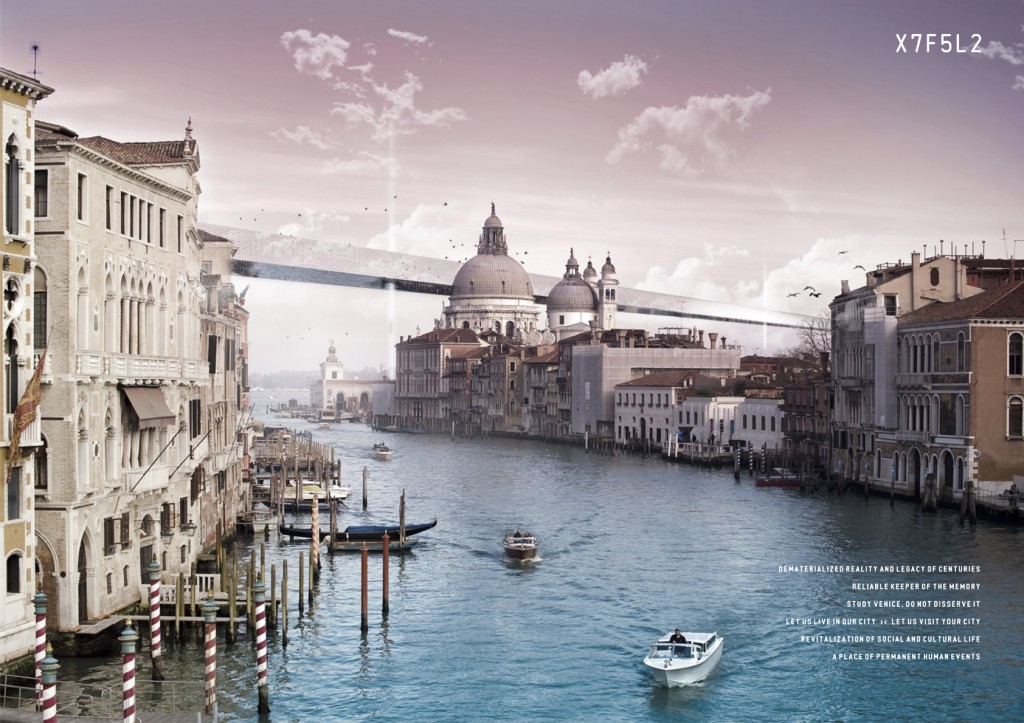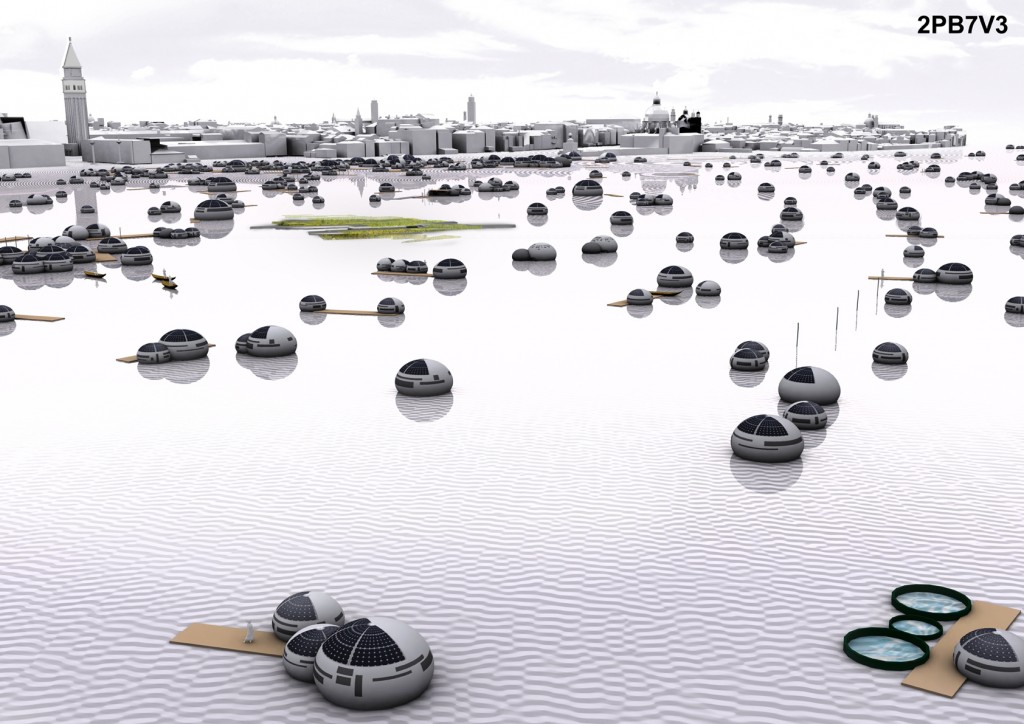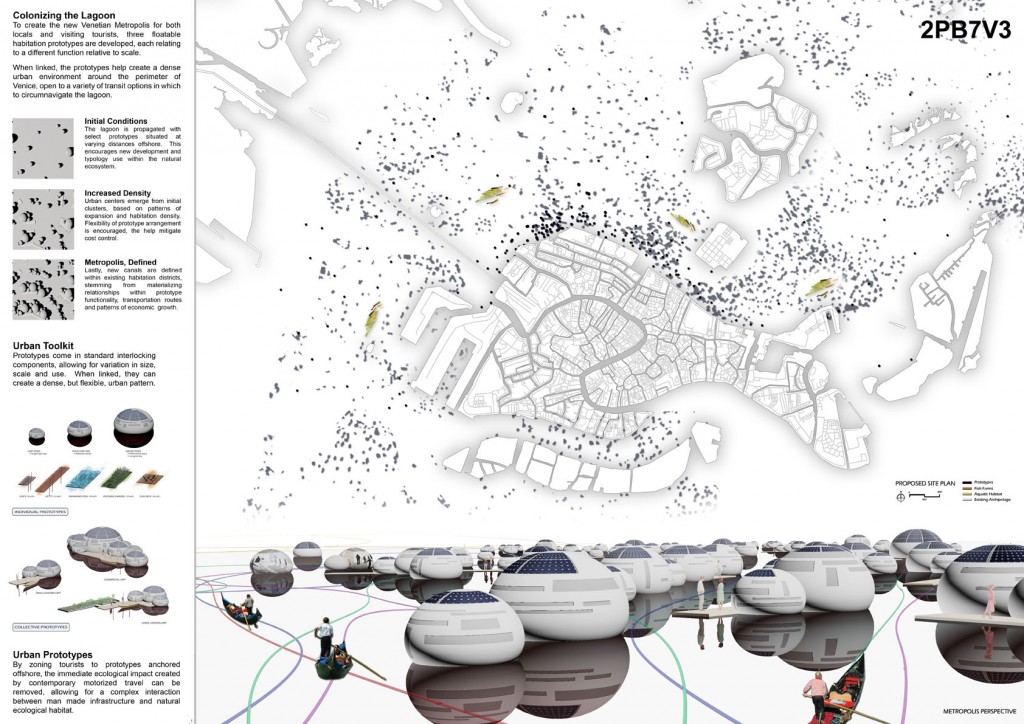Info:
Title: Urban Constellation – Contemporary Metropolis - Code: 2PB7V3Contest: Venice / 2011
By: M. Weisgerber
Views: 4922 Likes: 0
Votes:
BJARKE INGELS6 NERI OXMAN10 ELENA MANFERDINI3 MARIA LUDOVICA TRAMONTIN5 BOSTJAN VUGA45.6
Urban Constellation – Contemporary Metropolis
As is often becoming the case in many major European cities, Venice has been slowly dissolving into a ‘museum city’ status, based on rampant speculation, a rapidly aging population and exponential growth in tourism. It is increasingly difficult for locals to afford the city’s high cost of living, or compete with the sheer volume of tourists which permeate the contemporary culture. Much of this is attributed to the islands dimensional restrictions, which has limited the city’s ability to expand its commercial, logistic, and representative needs. The surrounding lagoon, which once offered security from invading forces, has confined contemporary motorized travel and expansion of habitation options within a shallow, finite area.
The Venetian Metropolis proposal seeks to colonize the entire 550k2 lagoon, simultaneously integrating man and nature along the thin aqueous membrane where earth meets sky. The proposal utilizes local and historical presidents, creating new development offshore that can once again promote the city’s physical expression of form by the functionality and relationships of its various urban arrangements. Floatable habitation prototypes create a multi-purpose environment, one that celebrates Venice’s canal heritage while offering solutions to the increasing frequency of the Acqua Alta. To unite the lagoon edge with the prototype constellation, an expansion of the existing gondola network is proposed by a series of docking terminals and overlapping transit arteries, re-establishing its role as the primary means of transportation through the lagoon. This system constitutes non-motorized access and navigation of the lagoon, reducing environmental impact upon local ecology while underlining another aspect of Venetian heritage and culture. By zoning tourists and residents to prototypes offshore, the immediate impact of existing motorized travel around the main archipelago can be mitigated, allowing organic growth and habitation around the historical core.
Amphibious Habitat.
The second phase of the Venetian Metropolis proposal expands upon the initial transit network and settlement patterns, by integrating ecological destination nodes into the new urban assemblage. To re-introduce aquatic species back into the central lagoon, floating wildlife habitats are anchored at various locations between the habitation prototypes, providing a stepped series of destination points for tourists, ornithologists, and visiting researchers. Made of permeable construction material, these ecological zones have the ability to attach their roots into the bottom of the lagoon bottom, to become a permanent fixture in the lagoon over time. Such ‘islands of ecology’ provide a safe haven for wildlife, free from predators and direct interaction with people. They also reduce eutrophication within the lagoon, by intercepting solar radiation while supporting natural habitat for both native fish and avifauna.
In addition to these natural typologies, floating fish farms, miniature desalinization plants and agriculture prototypes create a secondary economic generator for the growing
metropolis. They provide an additional source of food, water and other resources for the growing city.
Conclusion.
The Venetian Metropolis proposal mitigates the hard edges that currently define the existing island archipelago, offering a unique architectural opportunity that expounds upon historical typologies and settlement patterns. It allows for flexible urban patterns, shifting over time to correspond with changes in use or typology. Floating prototypes present the ability to colonize and integrate with the entire lagoon ecosystem; they can be economic generators, urban centers, or habitation for both people and local ecology. This also allows for a dynamic urban edge that can expand, condense, or be removed as necessary. Space of transition between terra firma and open sea.
Info:
Title: Urban Constellation – Contemporary Metropolis
Time: 7 giugno 2011
Category: Venice
Views: 4922 Likes: 0
Tags: Acqua alta , City of Water , Ecology , Lagoon , MOSE Project , Scripps Institution of Oceanography , Tourism , Venice








